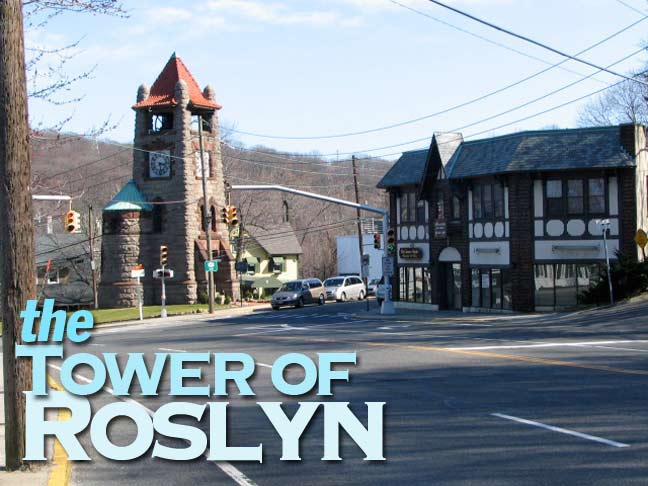I arrived in Roslyn on a March day in 2007 so clear and bright it crackled. It was, in fact, Easter Sunday. Visiting the North Shore, Long Island town of about 2600 on a day like this made me bewildered why I hadn’t more often; it’s full of history, ancient buildings and landmarks, and a gaggle of 1920s-era radial-wave streetlight luminaires that have pretty much disappeared from NYC. The answer, of course, is that Roslyn is now only about a 15-minute bus ride (about a half hour by bicycle) from Little Neck, where I moved in mid-2007.
Roslyn was settled as early as the mid-1600s by the British, who arrived via the southern end of Hempstead Harbor, which narrows into Roslyn Creek. By the 1770s, entrepreneur Hendrick Onderdonck built the nation’s first paper mill (that still stands in Geary Park.)
Onderdonck, who favored the patriots in the Revolutionary War, built a home that still stands today, as the George Washington Manor banquet hall, at Old Northern Boulevard and Main Street — so named for a visit Washington paid on Onderdonk at his home in 1790, as the President toured Long Island to thank island patriots for their assistance. (In NYC, a plaque commemorating Washington’s passage can be found on West Alley Road and 233rd Street in Oakland Gardens.)


Without a doubt, Roslyn’s standout landmark is its 44-foot (by some accounts 55-ft.) tall clock tower, which dramatically comes into view as you approach from the west on Old Northern Boulevard (Northern Blvd. proper crosses Roslyn Creek on a viaduct, which at this writing, June 2008, was being replaced.) It was constructed in 1895 at the cost of $7,000 and funded by the children of philanthropist Ellen Eliza Ward. The tower, and Roger Gerry Park, which it faces, stand in a valley surrounded by steep hills, with homes and businesses, some centuries old, lined up on Main Street, East Broadway, and Old Northern Blvd. in a roughly triangular shape.

The inscription in sandstone over the door reads: “In loving memory of Ellen E. Ward, A.D. 1895, to whom Roslyn and its people were dear. She fell asleep January 18, 1893.”
The tower is granite with sandstone trim, its walls 2-1/2 feet thick. Its bell, which sounds at the hour, weighs 2,700 lbs. The clock is a Seth Thomas.
The tower is shaped like an obelisk and has four faces. A mixture of Gothic, Romanesque and Egyptian Revival styles, it has a round turret on one corner, lancet windows and heavy buttresses flanking the front door. Inside, a circular staircase leads to the clockworks. The tower … was designed by Hugo Lamb and Charles Alonzo Rich, the New York architects who planned Sagamore Hill for Theodore Roosevelt. The New York Times


Can you tell that my camera was preternaturally attracted to this landmark?
The clock’s caretaker between 1937 until his death in 1959 was, fittingly enough, named George Washington, the son of a slave.
At the back of the tower can be found a smaller turret-like accompanying tower and a cannon captured by the USS Wasp from a Spanish gunboat, the Don Jorge Juan, sunk during the Spanish-American War. In front of the tower is a stone set with a plaque commemorating Rolsynites killed during World War II.
In 2006, Roslyn capped off an 11-year tower restoration project. Roslyn had acquired it from the Town of North Hempstead for the bargain price of $1.00 in 1995.

Main Street, which becomes Roslyn Road at the LIRR overpass, is one of Long Island’s oldest routes; it developed, along with intersecting Old Northern Blvd., from older Native American trails.

The venerable Clearview Roslyn Cinemas, on Tower Place in the tower’s shadow, dates to the 1920s.
6/18/08

